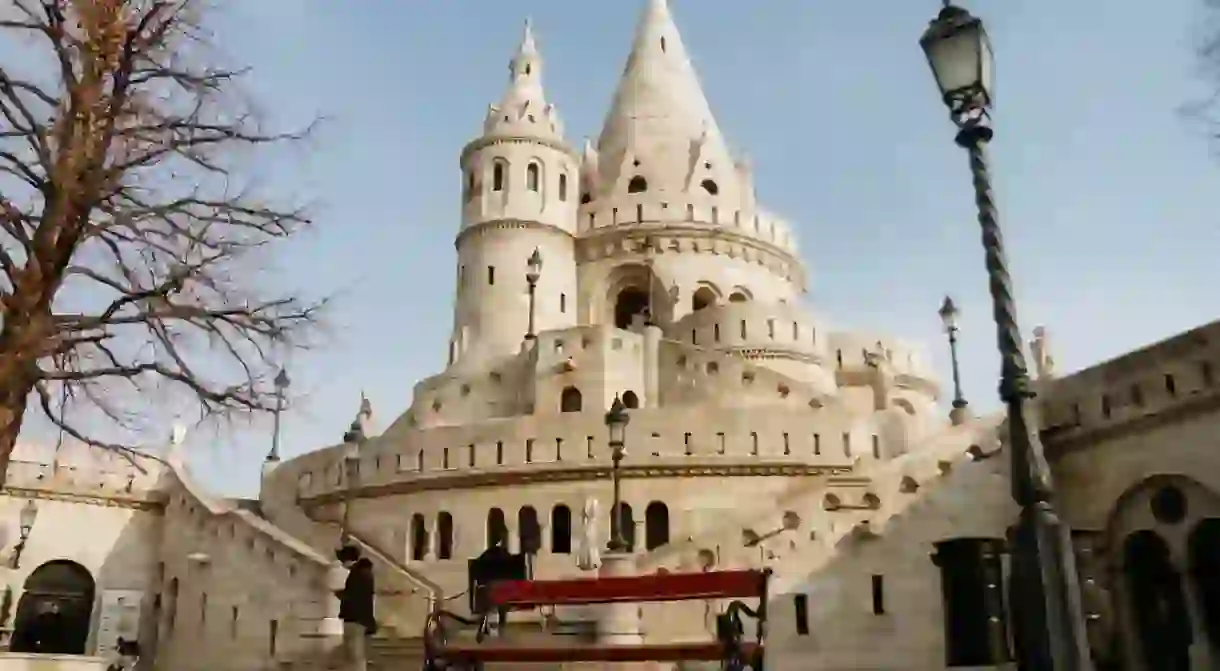A Guide to Fisherman's Bastion, Budapest

With its spectacular panoramic views of Budapest and the Danube and beautiful, ornate design, it’s easy to see why Fisherman’s Bastion is one of the most popular and most recommended tourist destinations in the city. But while the architecture might resemble battlements, the modern structure wasn’t designed with defense in mind. Here’s the history of Budapest’s Fisherman’s Bastion.

The early history of Fisherman’s Bastion
Despite being built on top of existing defensive structures that were in place on the hills of Buda Castle, Budapest’s Fisherman’s Bastion is actually a fairly modern construct. The original thick castle walls were built in the 16th century as part of the castle, and over the years it was attacked, captured, destroyed and rebuilt.

The battlements overlooked a small part of the city called Watertown – a modern day district by the same name, Víziváros – where the fishermen of the city lived and worked. It’s from here that Fisherman’s Bastion, Halászbástya in Hungarian, gets its name.

But construction of the modern day structure began in 1895 as part of the millennial birthday celebrations for Hungary, which was founded in 895. Construction would take seven years to complete.

The design of the structure
Since the castle had officially lost its function as a militaristic structure in 1874, the idea was to build something more communal instead of defensive for citizens to better appreciate the great views over the city and the Danube.

Fisherman’s Bastion was designed by Frigyes Schulek, whose intention was to create something more airy and accessible.

Rather than the limited viewpoints and narrow walkways of defensive castles – which was no longer a necessity – the new design of the battlements was to be far more open, with wide arches for better viewing and wide steps for ease of movement.

Schulek’s concept for the construction was to create something that replicated history, the emphasis being on creating a dramatic entrance for anyone heading up the hills towards Matthias Church – which itself was renovated from its original Gothic architecture to what it is today.

Another key aspect of Fisherman’s Bastion is its seven spired towers, which are intended to represent the seven founding Hungarian chieftains of the magyar tribes that controlled the land that would go on to become Hungary.

In addition to this, only a few years after completion of the structure, a statue was erected in 1906 of St Stephen – or Szent István – seen riding a horse. As the leader of the seven Hungarian tries, this is a typical presentation for the first King of Hungary.

Fisherman’s Bastion over the years
The area has retained this design and structure since its construction, however, in World War II the bastion was damaged, the looking tower taking the brunt of this while the Ministry of Finance building within the courtyard was ultimately burnt to the ground.

This building was later replaced by the Hilton Hotel, a controversial structure whose modern architecture and bronzed reflective windows are admittedly incomparable to the grandeur of Matthias Church or the Fisherman’s Bastion itself.

The hotel was opened in 1976, and sits behind the looking tower that was destroyed. The repairs to this tower were handed by the son of the original architect, János Schulek, shortly after the War.

And then, after being occupied by the Soviets, Fisherman’s Bastion would don a giant red star, hanging from the arches that looked out over the Danube. This star could even be seen from the city’s inhabitants on the Pest side, a constant reminder of the communist rule it was under.

Nowadays the structure is almost entirely enjoyed by tourists. While various events are hosted here, it is mostly a destination for those looking for those spectacular views over the city.

It can easily be reached on foot from Buda’s side of the Danube, but for those looking to avoid the numerous stairs a funicular can be taken near to Szechényi Bridge up to Buda Castle, from where it is just a short walk.

Additionally the number 16 bus will stop at Diaz tér, right besides Matthias Church. This bus can be taken from Deák Square in central Pest, crossing over Széchenyi Bridge and zigzagging up the hills to the top.
















